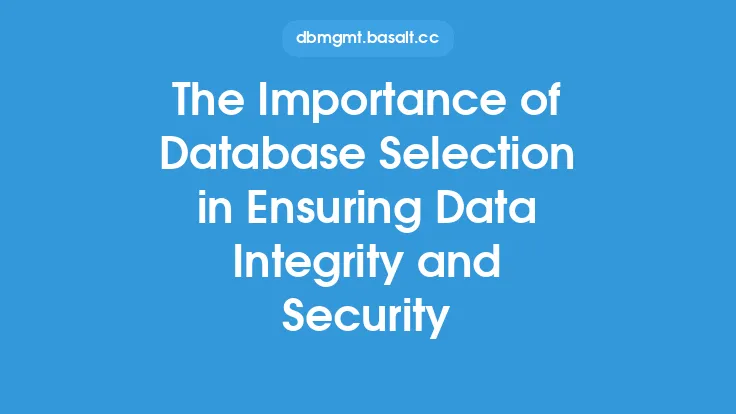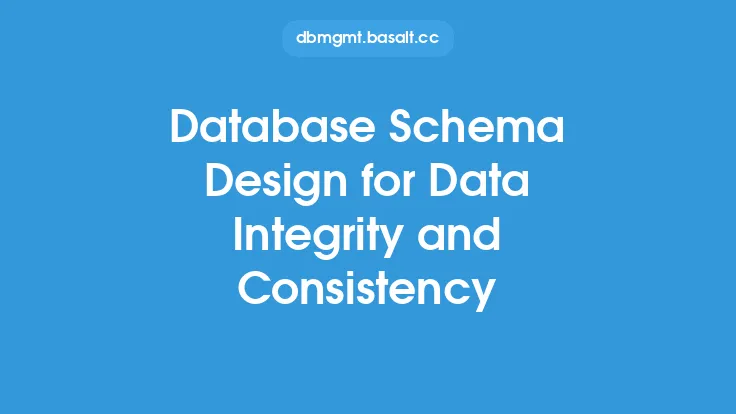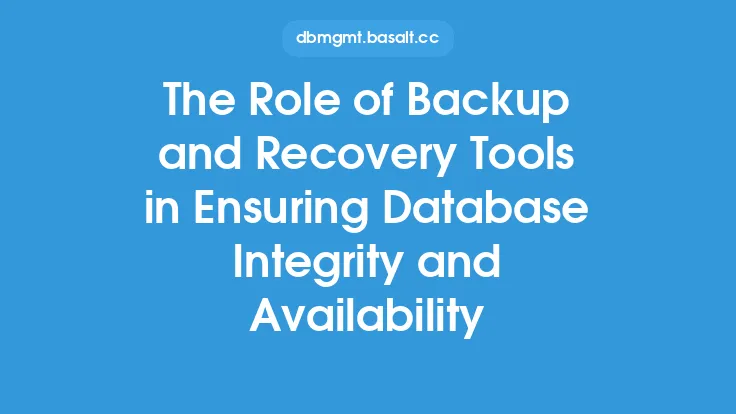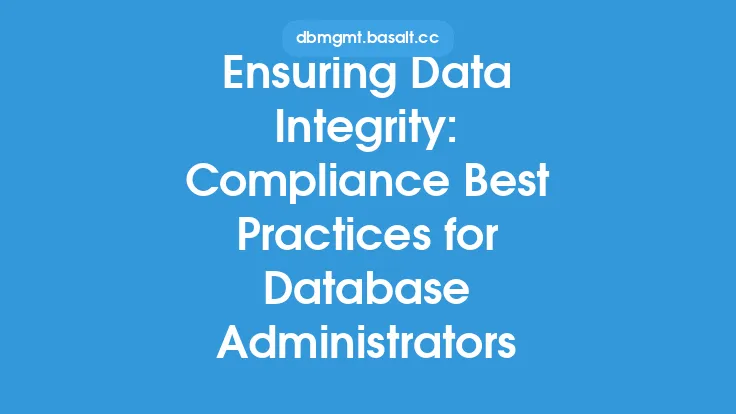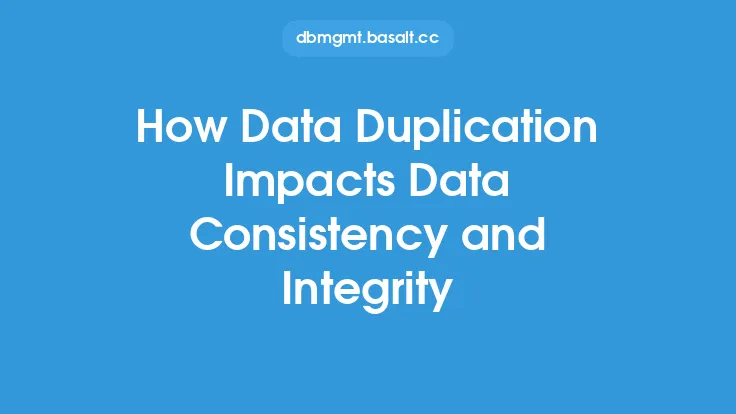Database consistency is crucial for ensuring the reliability and accuracy of the data stored within. Consistency checks are an essential part of maintaining database integrity, as they help identify and rectify any inconsistencies or errors that may have occurred due to various reasons such as hardware or software failures, human errors, or other unforeseen circumstances. In this article, we will delve into the world of database consistency checks and recovery, exploring the concepts, techniques, and best practices that help ensure data integrity.
Introduction to Database Consistency
Database consistency refers to the state of the database where all the data is accurate, reliable, and adheres to the defined rules and constraints. Consistency checks are performed to verify that the data in the database is consistent and valid. These checks can be performed at various levels, including the physical, logical, and semantic levels. Physical consistency checks verify the integrity of the physical storage devices, while logical consistency checks verify the integrity of the data structures and relationships. Semantic consistency checks, on the other hand, verify the meaning and context of the data.
Types of Database Consistency Checks
There are several types of database consistency checks that can be performed, including:
- Physical consistency checks: These checks verify the integrity of the physical storage devices, such as hard disks or solid-state drives.
- Logical consistency checks: These checks verify the integrity of the data structures and relationships, such as tables, indexes, and views.
- Semantic consistency checks: These checks verify the meaning and context of the data, such as checking for invalid or inconsistent data values.
- Transaction consistency checks: These checks verify the integrity of transactions, ensuring that all transactions are properly committed or rolled back.
Database Consistency Check Techniques
Several techniques can be used to perform database consistency checks, including:
- Checksums: Checksums can be used to verify the integrity of data by calculating a digital fingerprint of the data and comparing it with a previously calculated fingerprint.
- Hash functions: Hash functions can be used to verify the integrity of data by calculating a hash value of the data and comparing it with a previously calculated hash value.
- Data validation: Data validation can be used to verify the integrity of data by checking it against a set of predefined rules and constraints.
- Database auditing: Database auditing can be used to track and verify all changes made to the database, ensuring that all transactions are properly recorded and validated.
Database Recovery Techniques
In the event of a database failure or corruption, recovery techniques can be used to restore the database to a consistent state. Several recovery techniques are available, including:
- Backup and restore: Backup and restore involves creating a copy of the database at regular intervals and restoring it in the event of a failure.
- Transaction log recovery: Transaction log recovery involves replaying the transaction log to restore the database to a consistent state.
- Database repair: Database repair involves identifying and fixing corrupted or damaged data structures and relationships.
- Data reconstruction: Data reconstruction involves rebuilding the database from scratch using available data and transaction logs.
Best Practices for Database Consistency Checks and Recovery
To ensure database consistency and integrity, several best practices can be followed, including:
- Regular consistency checks: Regular consistency checks should be performed to identify and rectify any inconsistencies or errors.
- Automated backup and restore: Automated backup and restore processes should be implemented to ensure that the database is regularly backed up and can be quickly restored in the event of a failure.
- Transaction logging: Transaction logging should be enabled to track and verify all changes made to the database.
- Database auditing: Database auditing should be implemented to track and verify all changes made to the database.
- Data validation: Data validation should be performed to verify the integrity of data and ensure that it adheres to predefined rules and constraints.
Challenges and Limitations
While database consistency checks and recovery techniques are essential for ensuring data integrity, there are several challenges and limitations that need to be considered, including:
- Performance overhead: Consistency checks and recovery techniques can impose a significant performance overhead, particularly if they are performed frequently or on large databases.
- Data complexity: Complex data structures and relationships can make it challenging to perform consistency checks and recovery.
- Scalability: Large databases can be challenging to recover, particularly if they are distributed across multiple servers or locations.
- Human error: Human error can lead to inconsistencies or errors in the database, which can be challenging to identify and rectify.
Future Directions
As databases continue to grow in size and complexity, the need for effective database consistency checks and recovery techniques will become increasingly important. Future directions for research and development include:
- Artificial intelligence and machine learning: Artificial intelligence and machine learning can be used to improve the efficiency and effectiveness of consistency checks and recovery techniques.
- Cloud-based databases: Cloud-based databases will require new and innovative approaches to consistency checks and recovery, particularly in terms of scalability and performance.
- Real-time databases: Real-time databases will require consistency checks and recovery techniques that can operate in real-time, without imposing a significant performance overhead.
- Distributed databases: Distributed databases will require consistency checks and recovery techniques that can operate across multiple servers or locations, while ensuring data integrity and consistency.
